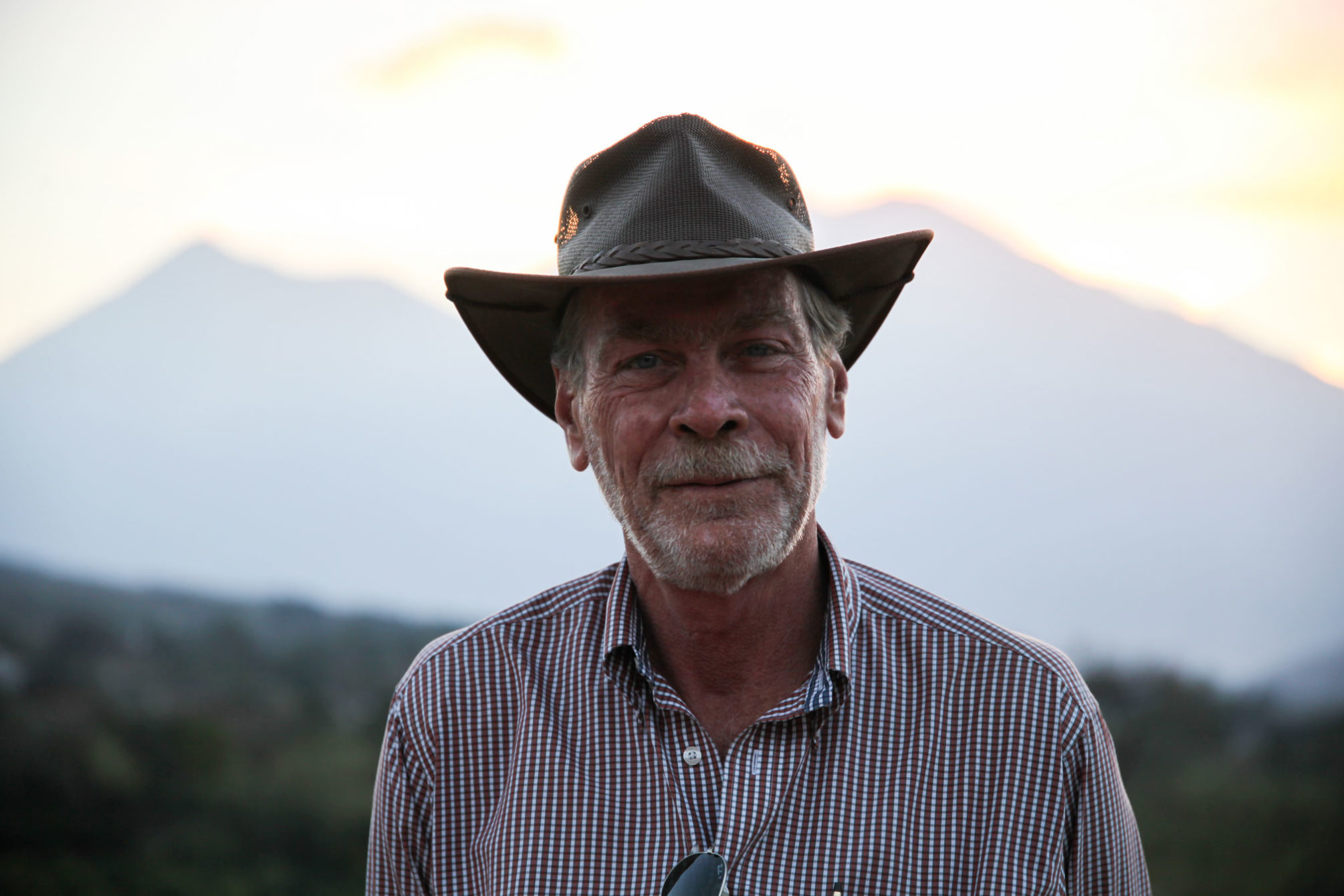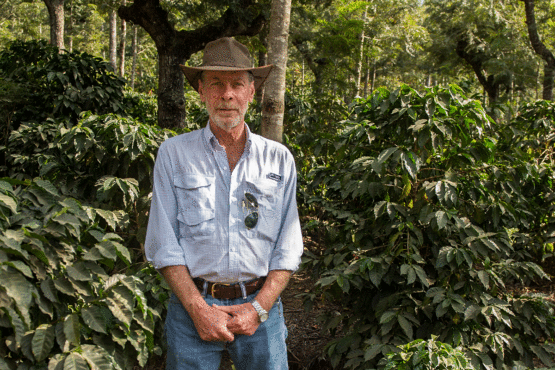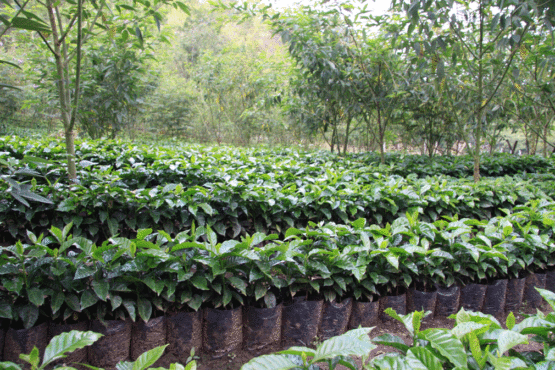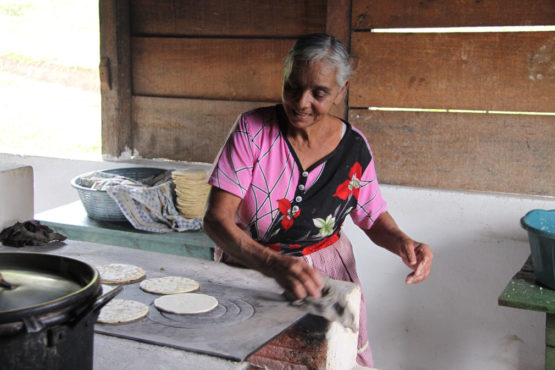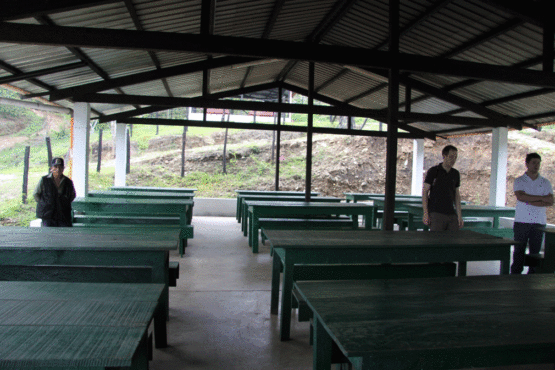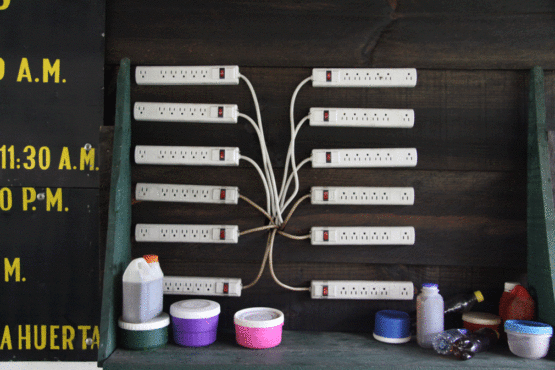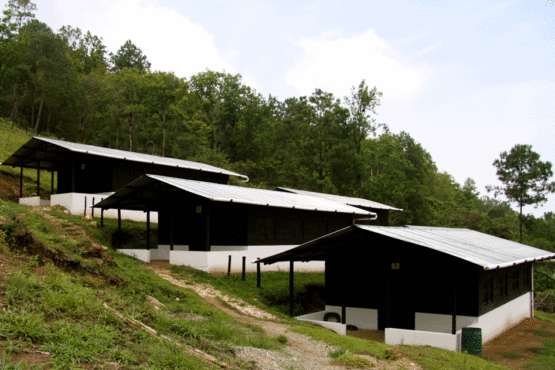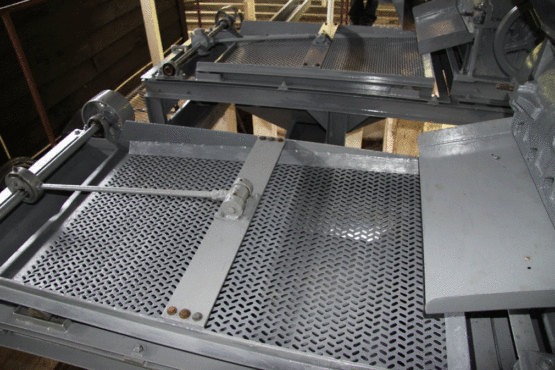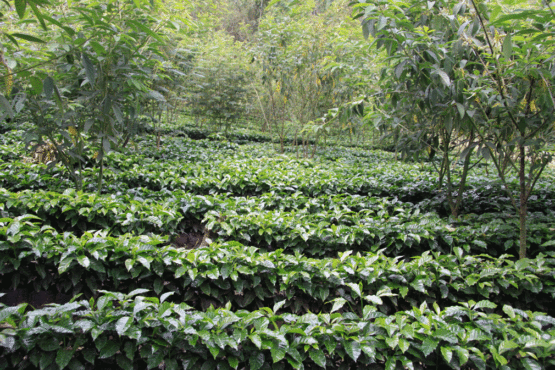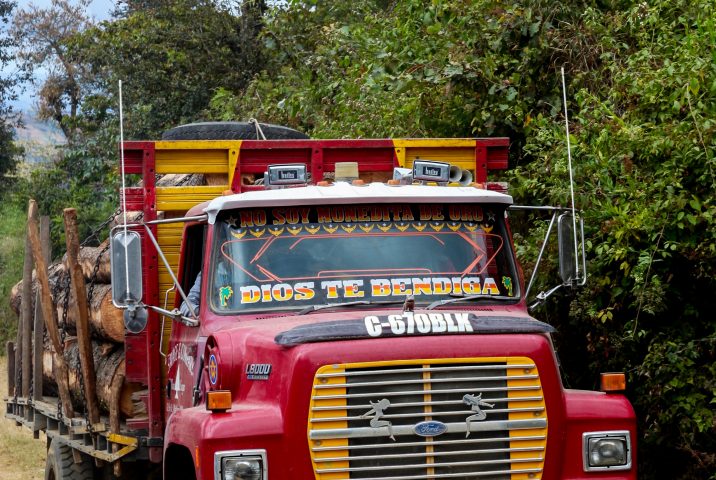Santa Ana La Huerta
Toffee sweetness and a rich body, with dried apple, milk chocolate and pecan. Pairs well with milk.
This coffee was produced by Rony Asensio, who has been growing coffee at Finca Santa Ana La Huerta for over three decades. The farm sits high in the Sierra de Las Minas mountain range, in Guatemala’s eastern highlands at an elevation of 1,370–1,820m above sea level.
Coffee has always been part of Rony’s life. He grew up around coffee in Antigua, and his father was also a coffee farmer. When he was young, Rony’s father sadly passed away, and the farm was sold. Rony knew one day he would return to coffee and follow in his father’s footsteps, however it was impossible to do this in Antigua, where the price of land was extremely high. After studying agriculture in Honduras, Rony began to search for a farm and eventually found a reasonably sized piece of land in Sierra de las Minas. It had a high elevation, rainfall, rich soils and good access to water to support the cultivation of high quality coffee. Taking advice from his father in law, legendary Antigua farmer Luis Pedro Zelaya (the father of Ricardo Zelaya of Santa Clara), he set about planting the farm with Caturra and Bourbon trees.
Rony is a perfectionist when it comes to coffee farming, and he works incredibly hard to produce great coffee. Each year we visit we are impressed to learn about the investments he has made to improve the quality of his coffee, and the wellbeing of his staff. He is meticulous in his approach to coffee production, taking a great deal of care to ensure he manages the farm according to the most stringent cultivation practices, and giving equal effort to the processing to ensure the very best quality coffee is produced.
When Rony describes his approach to farming, he explains, “Everything we do is done with love.” And you can see it. His attention to every single detail, in-depth understanding of agriculture, and high production standards are awe-inspiring and hard to fault.
Rony takes a very systematic approach to pruning at Santa Ana, removing around 1/3 of the coffee branches each year, to help combat disease and ensure efficient production. This pruning program is part of a broader, integrated farm management program that has seen a dramatic decrease in the reliance on chemical inputs for the farm.
Over the last few years Rony has taken steps to reduce his environmental footprint on the farm. He has significantly reduced his reliance on synthetic fertilisers and insecticides, and in recent times has also focused on trying to minimise the amount of water they use in processing, reducing it from sixty-four cubic meters to just six. Rony also treats all used water so as to ensure it is clean before it re-enters the ecosystem. This reduction in water usage has significantly reduced the burden on the local springs in the area—no small feat given the water shortages affecting many other communities in Guatemala.
Rony employs around 250 temporary workers during the harvest, who live in accommodation located on the farm. The workers are made three meals are day, and also given small plots to grow fresh produce on. Their facilities are clean and well cared for; as a result most of the same workers return every year to work on his farm as they know that they will be remunerated fairly and given good conditions.
ABOUT THE MARSELLESA VARIETY
Originally developed in Nicaragua as a collaborative effort between multinational coffee company ECOM and French agricultural research centre CIRAD, Marsellesa is one of the most promising hybrid varieties currently being propagated across Central America. Work on this Villa Sarchi and Timor hybrid cross began in Portugal as far back as 1959, with different lines being experimented on in a number of coffee-producing countries in the 1970s. Eventually, ECOM and CIRAD formalised an agreement to work on certain lines that were high-yielding and resistant to leaf rust, choosing the farm “La Marsellesa” in the Nicaraguan department of Matagalpa to carry out most of their work. Today, many Central American farmers are choosing to work with the variety, as it able to withstand the effects of climate change; can begin producing coffee within 18 months of planting; and importantly, presents good cup quality thanks to a refined and distinct acidity.
ABOUT SIERRA DE LAS MINAS
Sierra de las Minas is a lush, rain-drenched mountain range that contains some of Central America’s largest cloud forests. The region sits west of Lake Izabal, and contains some of Guatemala’s most diverse topography and breathtaking landscapes. Because the heart of the mountain range is made up of jade (a stone of spiritual significance to Guatemala’s First Nations people) and marble, it has been a hub of mining activities for centuries. Much of the area was declared a Biosphere Reserve in 1990, as an effort to protect the region’s native flora and fauna, which are estimated to contain some 70% of all bird and animal species found in Guatemala and Belize, including several threatened birds.
HOW THIS COFFEE WAS PROCESSED
The harvest at Santa Ana runs from December–March. Coffees are selectively picked by Rony’s team of “picky pickers” (a name he has come up with!) who are well trained in selecting only the very ripest cherries. In total between six to eight passes of the farm are made throughout the harvest to ensure the best quality cherries are selected.
Santa Ana’s wet mill is located at the farm. They have three pulpers, six fermentation tanks, a demucilager, and washing channel and green house with tiered African style beds. Rony takes a very data driven approach to processing the coffee: he reviews temperature readings throughout the drying process to inform how to manage the shade, airflow and movement in order to ensure the coffee stays in a stable and narrow range as it dries. This greatly helps the clarity, consistency, reliability and longevity of this coffee.
